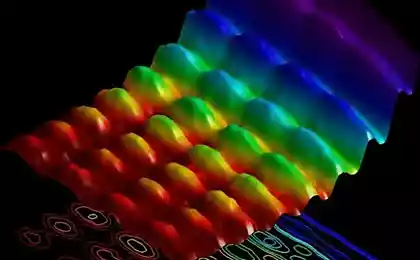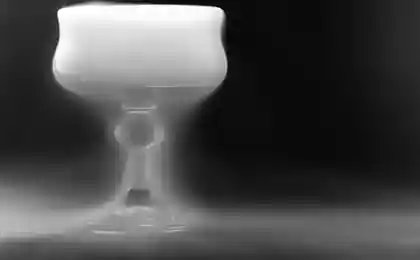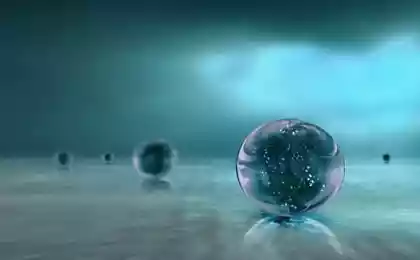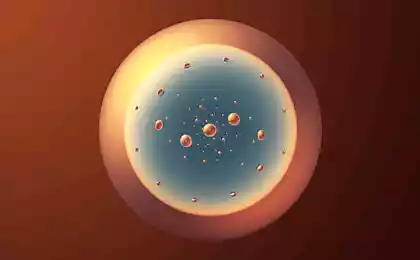477
The discovery of massless particles can seriously speed up electronics
Exotic particle, it is assumed that more than 85 years ago, finally opened. Called a "Weyl fermion" she is weird, but a stable particle that has no mass, it behaves like matter and antimatter in the crystal and, as you say, can create a completely massless electrons. Scientists believe that a new particle may lead to the emergence of ultrafast electronics and propel us even deeper into the world of quantum computing.

There are two types of particles that make up the Universe and everything in it: fermions and bosons. Simply put, fermions are particles that make up matter (electrons, for example), and bosons — particles that carry force (like photons). Usually fermions of type of electrons can collide with each other, losing energy, and no two fermions cannot be in the same state in the same position at one time. But Weyl fermions, since they are massless, no such restriction.
For the first time, Weyl fermions have started to discuss physics in 1929, with the filing of physics and mathematics Hermann Weyl, who suggested that there may be massless fermions that can carry an electrical charge. Without the masses, he believed, the electrons generated from the Weyl fermions, can transfer electric charge in a circuit is much faster than ordinary electrons. In fact, in accordance with the latest research, the electric current carried by electrons Weil, a test environment can move two times faster than that carried by the electrons in graphene, and 1,000 times faster than in conventional semiconductors.

An international group of scientists led by Princeton University of science and technology of materials (PRISM) and the Laboratory of topological quantum matter spectroscopy and studied a variety of crystal formations, before choosing an asymmetric crystal tantalum arsenide (half-metal, which has properties as a conductor of and insulator) as the leading candidate in the hunt for a theoretical particle.
Crystals of the arsenide tantalum, chilled almost to absolute zero, was placed in a scanning tunneling spectromicroscopy to see if they match the hypothetical performance for a host of Weyl fermions. Then, when the crystals have been tested, the team handed them over to the National laboratory of Lawrence in Berkeley, California, where they missed the beam of high-energy photons. This test finally confirmed the existence of the sought Weyl fermions.
"The nature of this study, as it turned out, really different from most other works which we have done before, says su-Yang Xu, researcher at Princeton. — As a rule, theorists tell us that some compounds may exhibit new and interesting properties, and we, as experimenters, check it in practice. In this case, we ourselves invented the theoretical prediction, and then experiments were performed. This made the final success all the more thrilling and satisfying than before."
As a quasi-particle — a particle that resides within a solid substance (in this case), but acts like she weakly interacting particles in free space — massless Weyl fermion and has a high degree of mobility. Since the spin of the particle is directed in both directions when it moves to the "right hand" and "left hand", as physicists say, it can overcome obstacles that impede a normal electron.
"They seem to have their GPS that controls them without scattering, says Princeton University physicist Zahid Hasan. — They will move only in one direction, because they are right-handed and left-handed, and never will come to an end, simply because they are tunneling. This is a very fast electrons, which behave similar to a unidirectional light rays, they can be used for new types of quantum computing".
Initially, Weyl believed his fermion part of an alternative model of the theory of relativity, proposed by his colleague albert Einstein. Although the Weyl hypothesis lost to the hypothesis of Einstein, his idea of theoretical particles continued to torment physicists for many years. However, as a purely "theoretical" particle, even if detected hints of a Weyl fermion, they blamed on an erroneous manifestation of the neutrino. Looking back, we can assume that it was indeed Weyl fermions, since in 1998 it was discovered that neutrinos have a small mass.
"People have decided that although the Weyl theory is not applied to the theory of relativity or neutrinos, it refers to the basic form of the fermions and has a weird and good properties which can be useful, says Hassan. — After more than 80 years we found that this fermion was waiting for us. This is the basic building block of all electrons. And very cool that we finally brought him out of the theoretical recipe of Weyl, 1929".
P. S. And remember, only by changing their consumption — together we change the world! ©
Source: hi-news.ru























